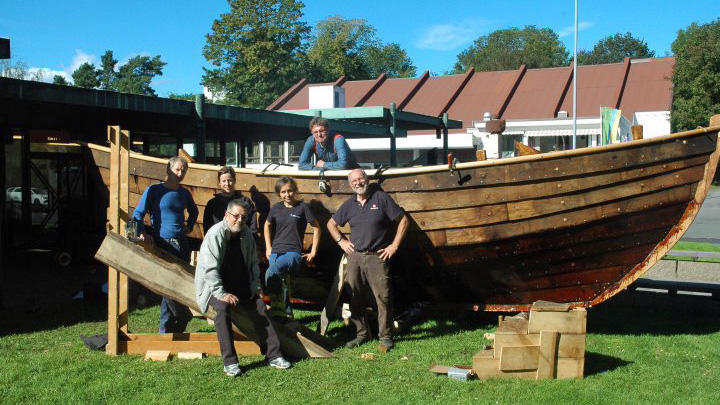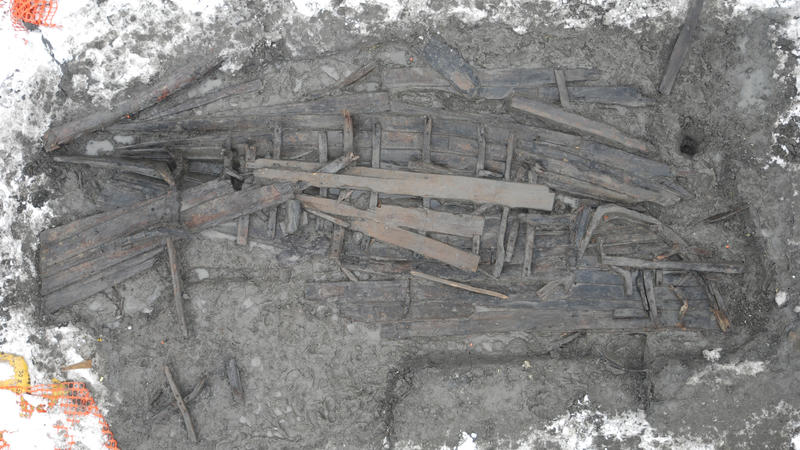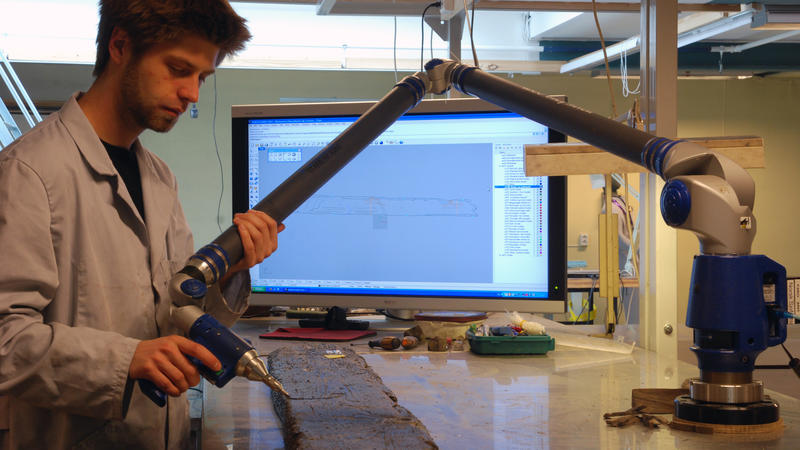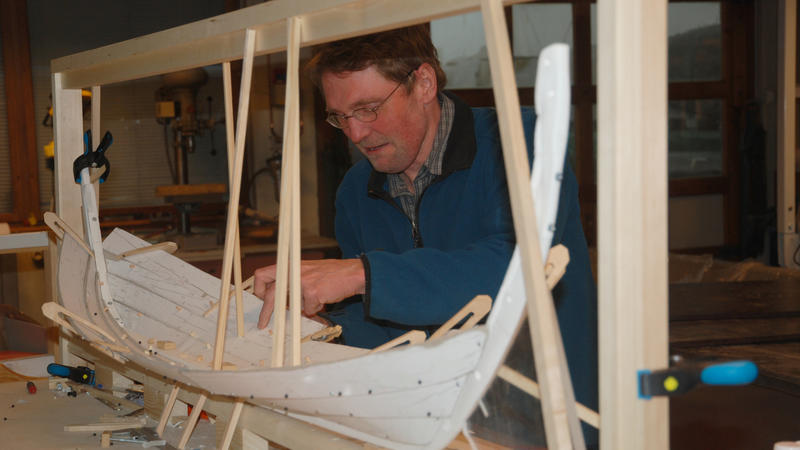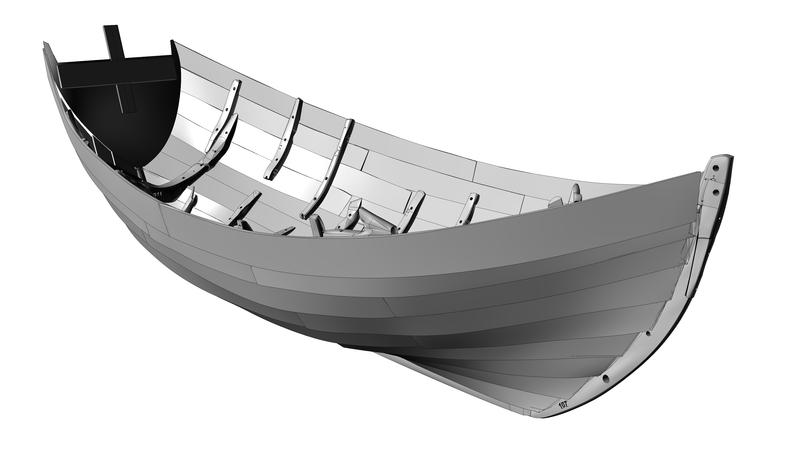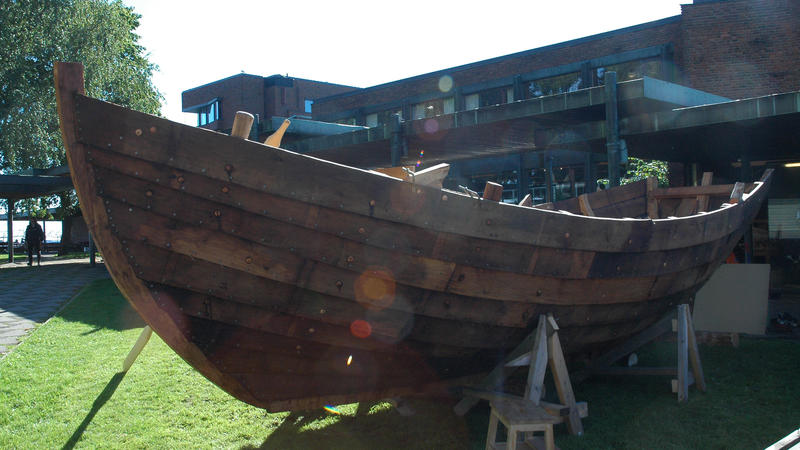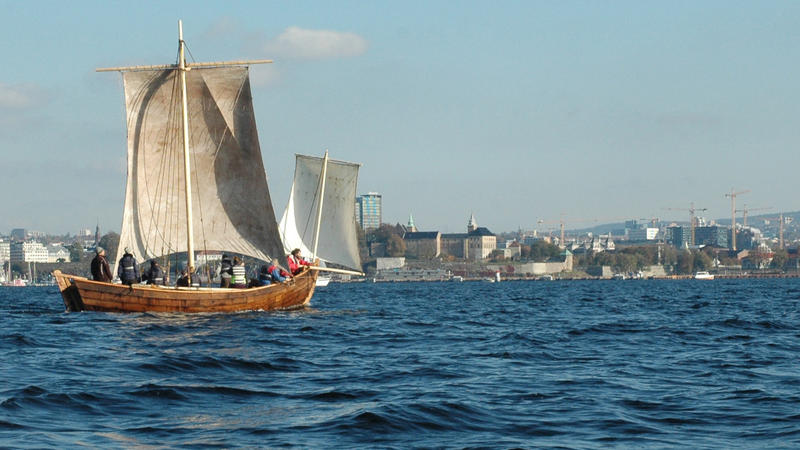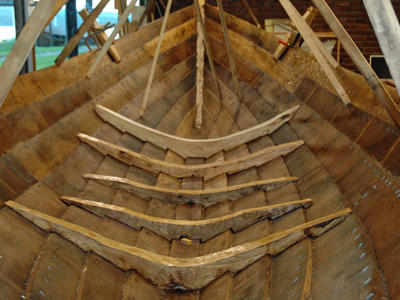- 1/1
Boatbuilder Lars (top) and crew in front of Vaaghals, a reconstruction of an archaeological find dated to 1595. Norsk Maritimt Museum
The Norwegian Maritime Museum has a responsibility to preserve and communicate our maritime cultural heritage. The Boat Lab plays an important part in this work. Our goal is to produce knowledge through the reconstruction of archaeological boat and ship finds, and to communicate traditional maritime handicraft.
After the museum's archaeologists have finished recording an archaeological boat find, the Boat Lab is where the further investigations into the boat's construction and sailing capabilities take place. First a 1:5 or 1:10 scale model is built, usually in a combination of 3D printed plastic and cardboard, based on the recordings made by the archaeologists. Once the model is complete, the full scale reconstruction starts.
The reconstruction process provides important insight into the function of the boat, in addition to the boat building technology, material usage and -understanding, time and resource management of the past. The boatbuilder plays a central part in this process, but the successful reconstruction of an archaeological boat find requires close cooperation between professionals of varying trades. As such, the Boat Lab has become a gathering point for the museum's expertise in digital recording of boat remains, conservation of waterlogged wood, model building, maritime history and coastal culture, boatbuilding, archaeology, tar production and museum education.
Previous and ongoing projects in the Boat Lab
- Currently Vaterland 1, the reconstruction of a late medieval boat find, is being built in the Boat Lab. This reconstruction is a joint project between the Norwegian Maritime Museum and the municipality of Oslo. Vaterland 1, dated to the beginning of the sixteenth century, was discovered during roadworks in front of the main bus terminal at Schweigaards gate in the centre of Oslo. It had probably been abandoned near what was then the Akerselva river's mouth.
- The Boat Lab's second project was the reconstruction of the Portørenga boat, found on the seabed near the town of Kragerø in Southern Norway, excavated in 1981. More than thirty years later the museum received funding to build a reconstruction, which was launched in April 2015. It is now sitting on the water in the harbour of Kragerø, not far from where it was originally found.
- The first project completed in the Boat Lab was the reconstruction of Barcode 6, one of thirteen wrecks found during the Barcode excavation in Oslo harbour in 2008/2009. The reconstruction was named Vaaghals (meaning Daredevil in Norwegian), and was launched in September 2011. It is currently located in the museum harbour at Bygdøynes.
- In 2016, while there was no ongoing archaeological reconstruction project, the Boat Lab's volunteers built a variety of what is called a Holmsbu pram (also known as Norwegian pram). It was launched in in august 2016, and is so far the only vessel built in the Boat Lab that has not been based on an archaeological find.

Charlotte Melsom
